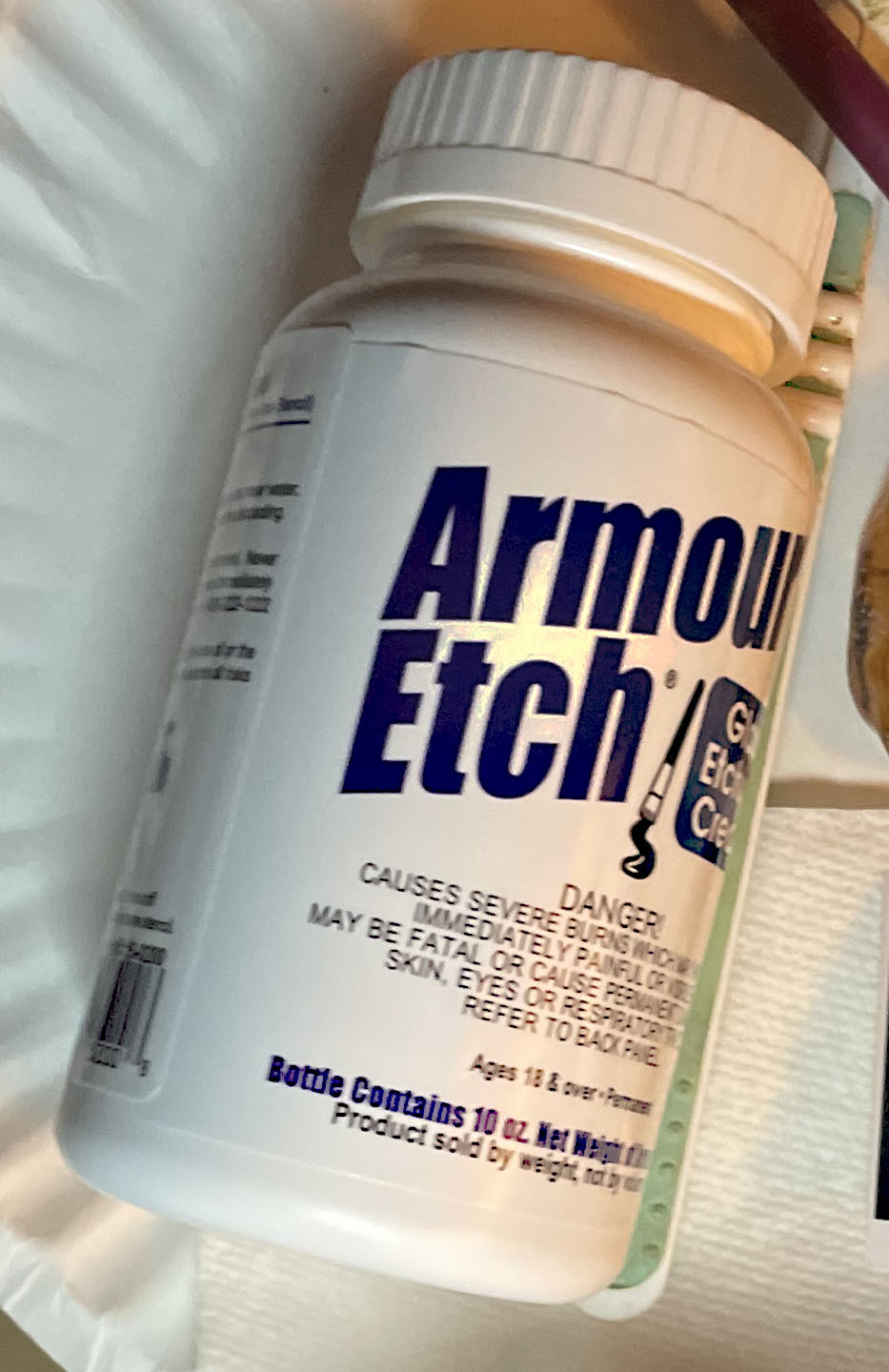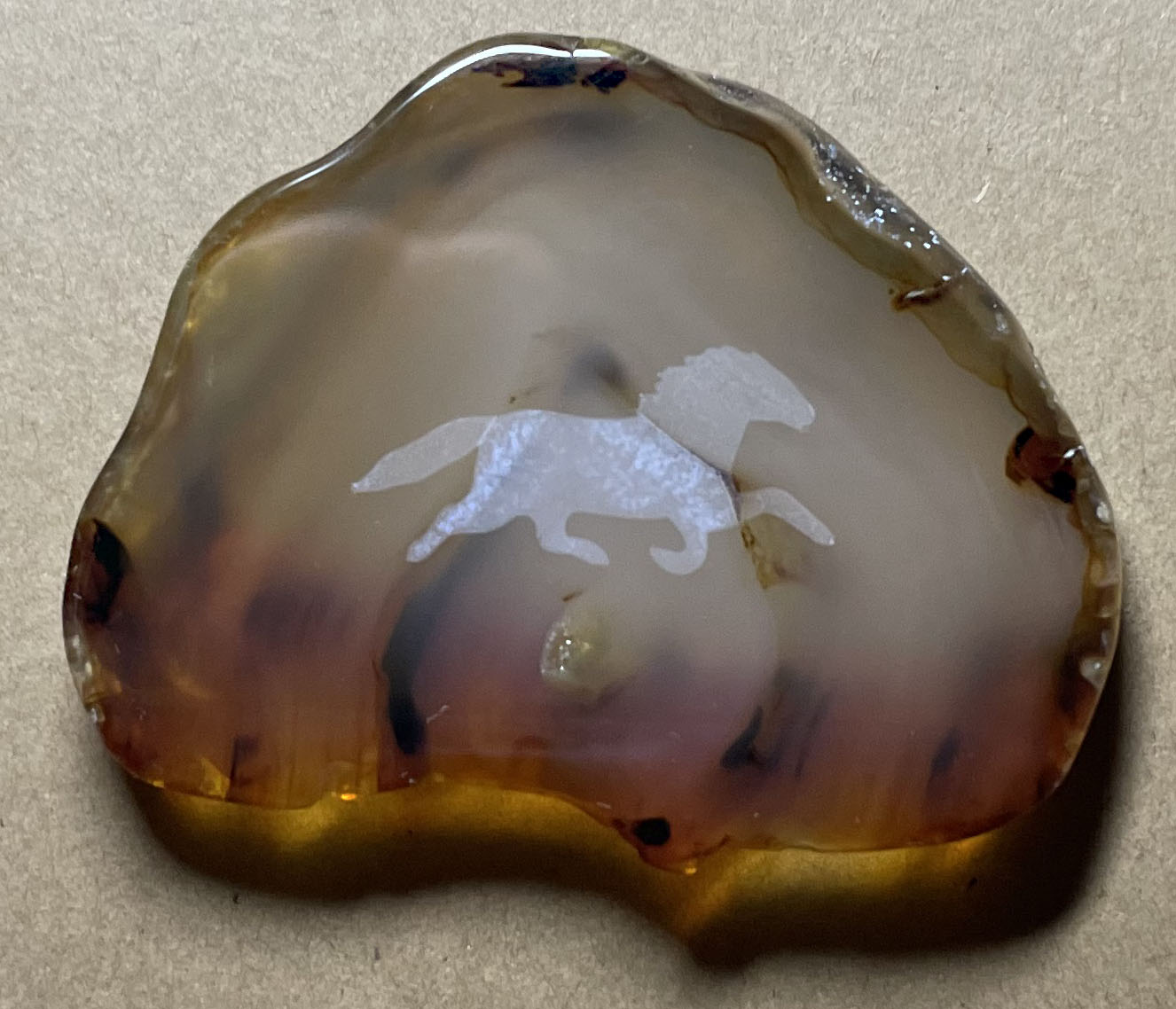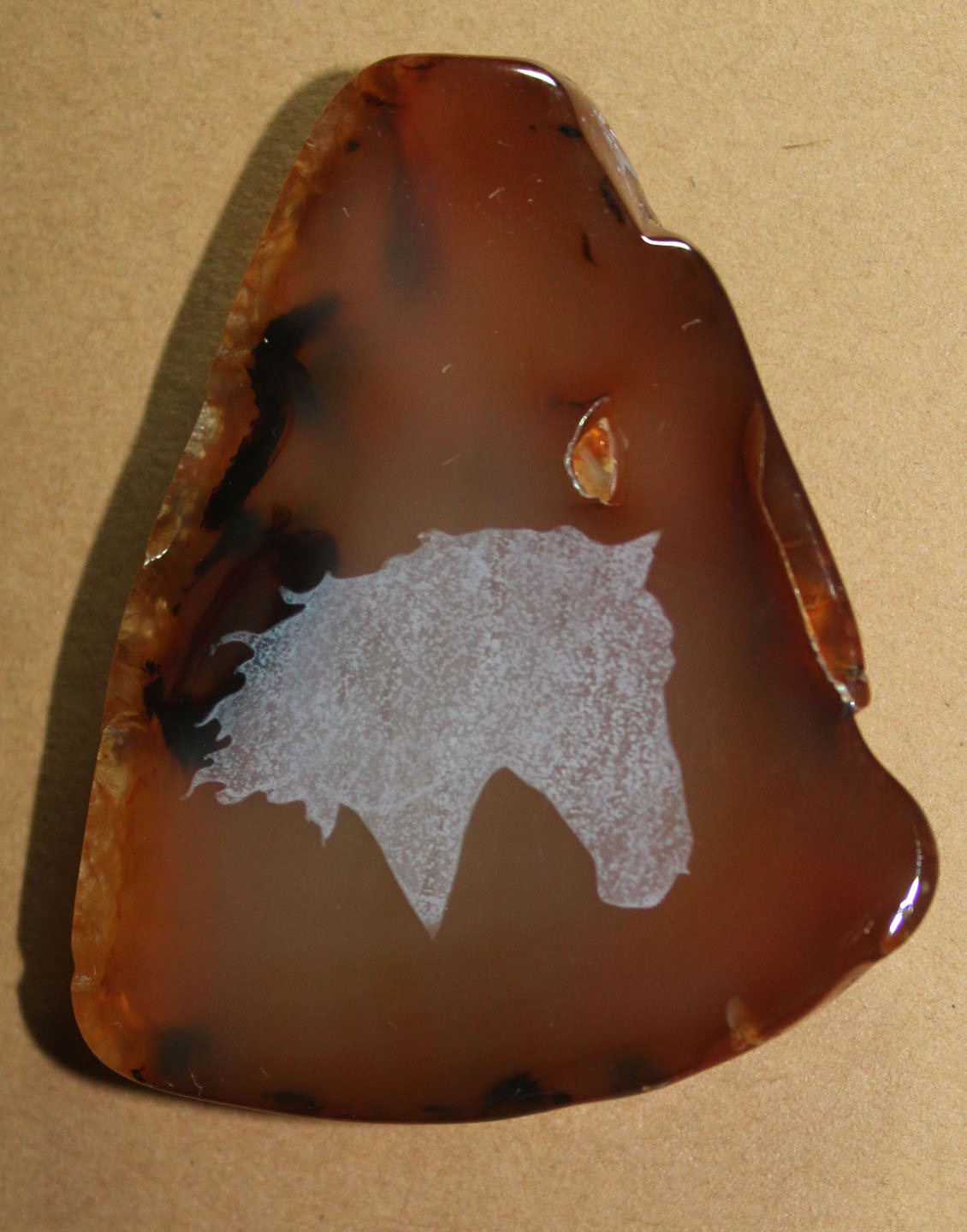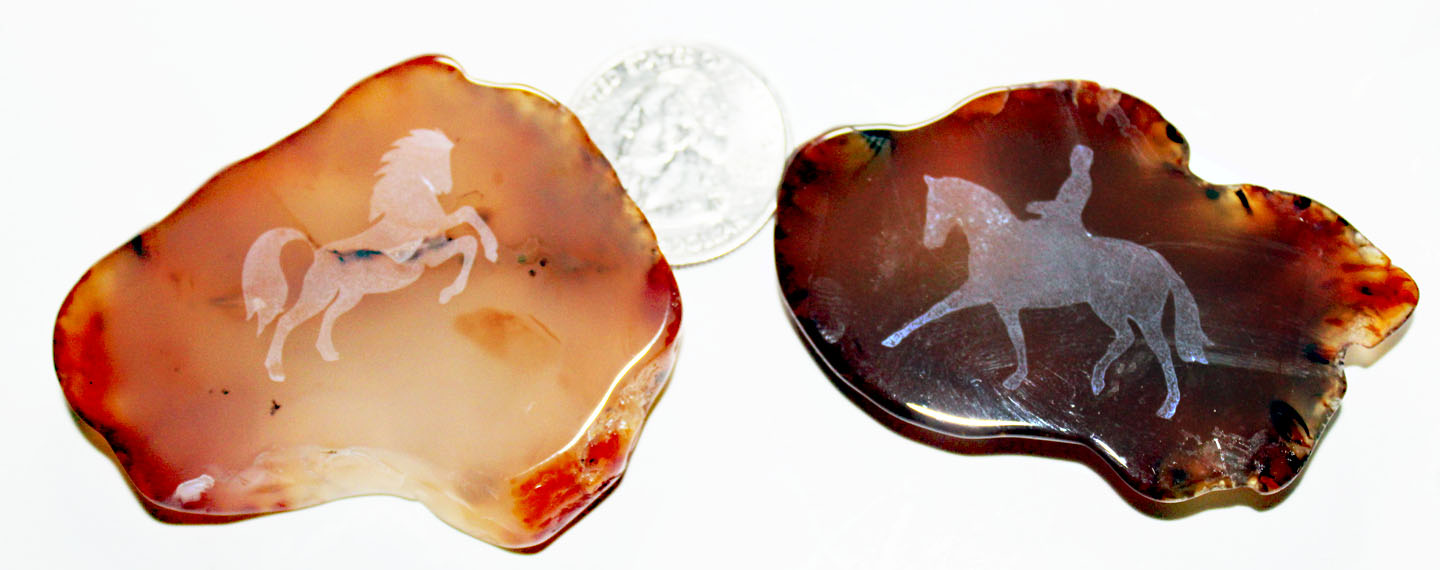|
|
Post by fernwood on Sept 24, 2022 7:21:06 GMT -5
It worked! Yellow agate from India. I left the etching cream on for about an hour. For glass it is usually left on for less than 5 minutes. I also put the cream on very thick. Used Armour Etch glass etching cream. There is a special etching cream made for rocks and glazed ceramics, but it is pricey.  Like how some areas etched differently than other ones.  Many thank yous go out to victor1941 for selling me some perfect slabettes for this project. |
|
|
|
Post by vegasjames on Sept 24, 2022 7:48:54 GMT -5
Maybe experiment with sodium or potassium hydroxide, which also etch glass. Still need to be careful handling the hydroxides as they are very caustic.
|
|
|
|
Post by liveoak on Sept 24, 2022 8:16:19 GMT -5
|
|
|
|
Post by jasoninsd on Sept 24, 2022 10:36:19 GMT -5
That'll open some more doors for projects! Really cool Beth!  |
|
ericabelle
spending too much on rocks
  Instagram acct: @erica_shoots_everything
Instagram acct: @erica_shoots_everything
Member since April 2021
Posts: 482
|
Post by ericabelle on Sept 24, 2022 11:41:37 GMT -5
Wow! What a creative idea, fernwood - I had no idea this could be done |
|
|
|
Post by victor1941 on Sept 24, 2022 14:27:53 GMT -5
Fernwood, this looks great!
|
|
Deleted
Deleted Member
Member since January 1970
Posts: 0
|
Post by Deleted on Sept 24, 2022 14:35:40 GMT -5
Thats awesome Beth!
|
|
|
|
Post by vegasjames on Sept 24, 2022 18:09:05 GMT -5
Wow! What a creative idea, fernwood - I had no idea this could be done The slab is primarily silicon dioxide, very similar to glass. The cream is a bifluoride cream, which is much safer than hydrofluoric acid that they used to use to etch glass. Still do not want to get the bifluoride cream on the skin. The longer the cream is left on the piece, the more silica (silicon dioxide) it will dissolve and thus it is possible to get 3D effects if done in layers with resist. Same with sandblast etching. A resist is put on the face and the pattern drawn. The areas that are to be the deepest have the pattern cut away from the resist first and the cream applied or the area sandblasted. Then the resist removed from the area that will be slightly shallower and the process repeated so that both the already treated area and the newly exposed area are both being eaten away leaving the deeper areas always deeper than the more recently exposed areas.
Here is an example that was done by a lady I used to date. She was a very talented artist and learned sandblast etching of glass from her dad.
I used to etch glass using bifluoride creams, sandblasting and with engravers, but all 1 dimensional. Never got experienced enough to do 3D.
I mentioned in an earlier post about using sodium or potassium hydroxide. I have thought about this for a while and have been meaning to try it, but have not gotten around to it yet. Hydroxides will also dissolve silica. This is how the glass in shower walls and doors can etch over time. The water has minerals in in that as the water and minerals dissociate combine to form weak mineral (metal) hydroxides such as calcium hydroxide, potassium hydroxide, etc. depending on the minerals present in the water. Over time these very weak hydroxides eat away at the silica in the glass etching the glass. A more concentrated solution of a hydroxide solution should speed up the process.
In fact, if you take some sodium hydroxide powder and put it in a can or pure steel (not aluminum or lined pans) you can melt the sodium hydroxide on the stove top. Put a glass in the molten sodium hydroxide and the glass will dissolve forming sodium silicate (waterglass).
|
|
|
|
Post by fernwood on Sept 25, 2022 7:24:59 GMT -5
Interesting. Thanks for sharing.
|
|
|
|
Post by fernwood on Sept 25, 2022 8:48:32 GMT -5
I made another one today. Left the etching cream on for 1.5 hours this time. I like how it turned out. Thinking about doing a plant based, permanent stain to tone down the white a little. The horse would then be a creamy color. Or, I could do a Black Walnut stain for a dark brown. Both of these stains would be permanent.  Including a photo of both with Quarter for size reference. Learning that each slabette will etch a little different, depending on the hardness of specific areas of the rock. The white areas around the horse on right are reflections.  |
|
vance71975
freely admits to licking rocks
  
Member since September 2022
Posts: 760
|
Post by vance71975 on Sept 25, 2022 23:32:07 GMT -5
I made another one today. Left the etching cream on for 1.5 hours this time. I like how it turned out. Thinking about doing a plant based, permanent stain to tone down the white a little. The horse would then be a creamy color. Or, I could do a Black Walnut stain for a dark brown. Both of these stains would be permanent.  Including a photo of both with Quarter for size reference. Learning that each slabette will etch a little different, depending on the hardness of specific areas of the rock. The white areas around the horse on right are reflections.  Those are awesome! |
|
|
|
Post by fernwood on Sept 26, 2022 7:45:00 GMT -5
Did a couple more this AM. More variations in rock hardness. Left the cream on for 2 hours, but some areas did not etch well. Note that some areas on right rock have smudges on them. These are not etched in, just smudges I was able to remove with alcohol. I am having way too much fun doing these. My daughter is making some more stencils for me with her Circuit. Thanks everyone on the nice comments and support.  |
|
|
|
Post by victor1941 on Sept 27, 2022 15:53:04 GMT -5
Fernwood, really like your designs. I'm looking for horses jumping over the rainbow or 2 or more horses waiting to be loaded into the starting gate in your next designs. What about a $1,000,000 banner for the winning horse?
|
|